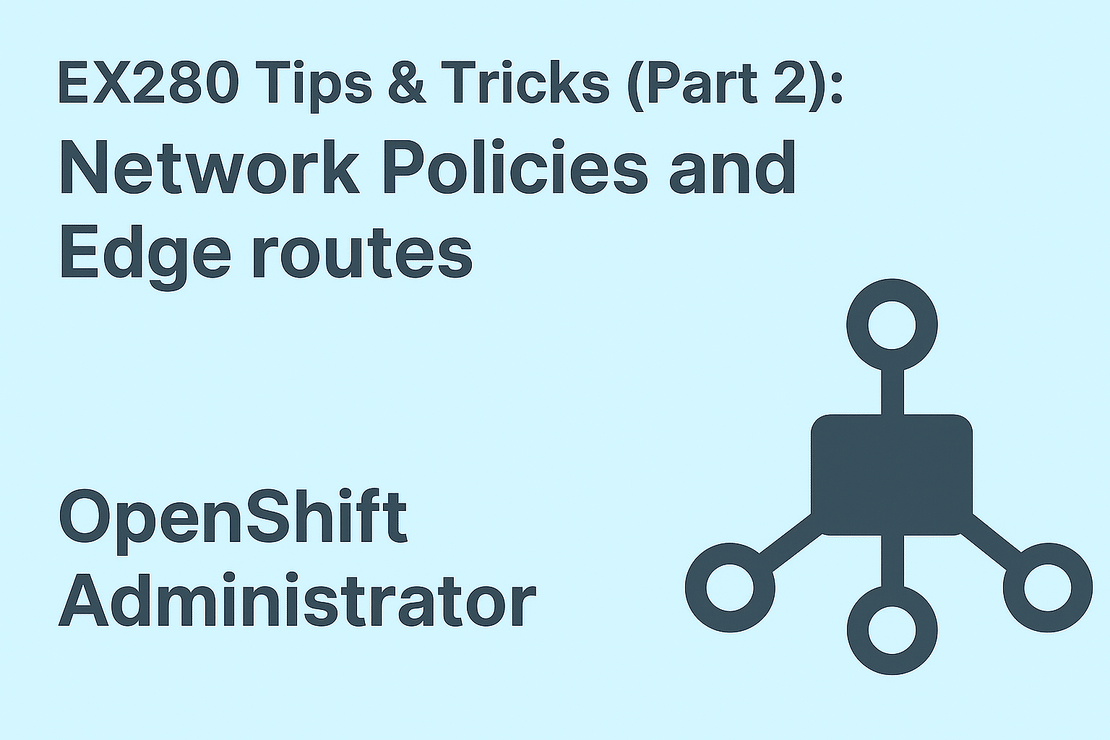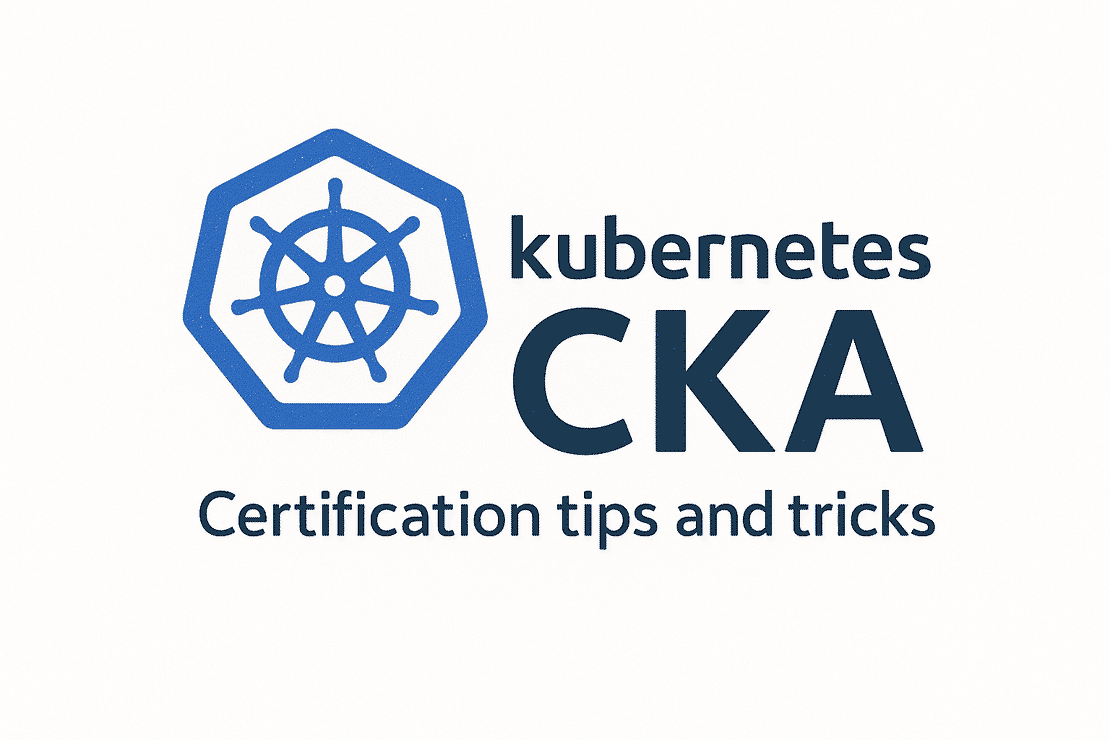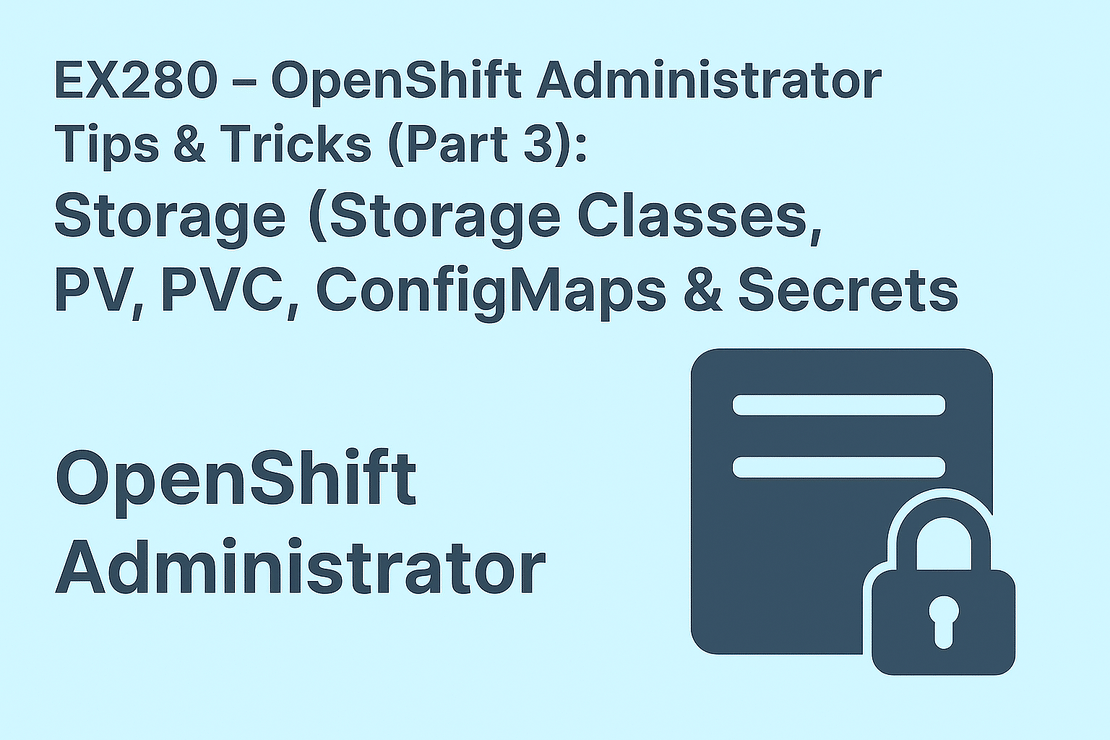
EX280 – OpenShift Administrator Tips & Tricks (Part 2): Network Policies and Edge Routes
- tharun-vempati
- Certifications , Dev ops , Red hat , Open shift , Administrator
- November 9, 2025
Table of Contents
Welcome to the second part of my EX280 – OpenShift Administrator Tips & Tricks mini-series!
In this post, we’ll explore Network Policies and Edge Routes — two essential exam objectives that often confuse first-time candidates. Mastering them not only boosts your chances of success in the EX280 but also builds your foundation as a secure OpenShift administrator.
🧩 Why Network Policies Matter
Network Policies in OpenShift (and Kubernetes) define how pods communicate with each other and with the outside world.
By default, pods can talk to any other pod in the same cluster — which is not ideal for production-grade security.
Your goal in the exam:
You should be able to create, test, and apply a NetworkPolicy that limits communication between specific namespaces or pod groups.
Example: Restrict Traffic Between Namespaces
Here’s a typical exam-style task you might encounter:
“Only allow pods with label
app=frontendin thedevnamespace to communicate with pods labeledapp=backendin theprodnamespace.”
You could achieve that using the following manifest:
apiVersion: networking.k8s.io/v1
kind: NetworkPolicy
metadata:
name: allow-frontend-to-backend
namespace: prod
spec:
podSelector:
matchLabels:
app: backend
ingress:
- from:
- namespaceSelector:
matchLabels:
kubernetes.io/metadata.name: dev
podSelector:
matchLabels:
app: frontend
policyTypes:
- Ingress
✅ Pro Tip:
Always double-check your labels and namespaces — 80% of NetworkPolicy issues stem from incorrect selectors.
🌐 Understanding Edge, Passthrough, and Re-encrypt Routes
Routes in OpenShift expose your applications externally.
The EX280 focuses mainly on your ability to create secure routes and understand different TLS termination types.
Three Key Route Types You Must Know
| Type | Description | TLS Termination |
|---|---|---|
| Edge | TLS terminates at the router. The router decrypts traffic before forwarding it to the backend. The router (Ingress Controller) decrypts (terminates) the TLS traffic, so backend pods receive unencrypted (HTTP) traffic. | ✅ Yes |
| Passthrough | TLS terminates at the pod, allowing full end-to-end encryption. | 🚫 No |
| Re-encrypt | TLS terminates at the router, then re-encrypts before reaching the pod. | ✅ Yes (twice) |
Example: Creating a Secure Edge Route
🔐 Edge Routes — The Exam’s Subtle Sysadmin Challenge
Creating an edge-terminated route in OpenShift is straightforward when everything is provided. But during the EX280 exam, things are deliberately structured to test your real-world troubleshooting mindset.
You’ll often see instructions like:
“Use the provided script
create-certs.shto generate the certificates required for an edge route.”
Sounds simple, right?
But here’s the catch:
- The script name is provided ✅
- The path to the script is not ❌
This is intentional. It tests your ability to locate files across the Linux filesystem — a crucial skill for any OpenShift admin operating in production environments.
🕵️ Searching for the Certificate Script
The script can be anywhere inside the workstation filesystem. Searching manually is time-consuming and inefficient.
This is where your Linux sysadmin skills shine.
Use the find command:
find / -type f -name "create-certs.sh" 2>/dev/null
If you only remember part of the script name (which is common in exam pressure):
find / -type f | grep cert
If you only remember part of the script name (which is common in exam pressure):
find / -type f | grep cert
✅ Adding 2>/dev/null helps suppress permission-denied noise and keeps your output readable.
Once you find the script: 📁 Copy the Script to Your Working Directory
cd /path/to/script
cp create-certs.sh ~/
cd ~/
Next, ensure you have permission to execute it:
chmod +x create-certs.sh
And run it:
./create-certs.sh
The script typically generates: tls.crt tls.key sometimes ca.crt These files are essential for the edge route.
🚀 Create the Edge Route Using Certificates Once you have the certificates in your home directory, run:
oc create route edge secure-app \
--service=myapp \
--cert=tls.crt \
--key=tls.key
If the script outputs a CA file and it’s required:
--ca-cert=ca.crt
Make sure you reference the correct service name.
✅ Pro Tip:
You can test the route’s TLS configuration quickly using:
oc get route myapp-edge -o yaml | grep tls
🧠 Why This Matters
This entire process tests more than OpenShift knowledge:
Navigating Linux directories
Using find and grep effectively
Understanding file permissions
Executing scripts
Generating and applying certificates
These are the real-world skills you’ll use in day-to-day OpenShift administration — and the exam expects you to perform them confidently.
🧠 Exam Strategy
- Practice creating and deleting routes using both the CLI and the web console.
- Be comfortable identifying which route type to use in a given scenario.
- Learn to validate route status using:
oc describe route <route-name> - Always label namespaces and pods consistently when writing NetworkPolicies.
- Practice using find and grep under pressure
If you can configure a secure Edge route and apply a valid NetworkPolicy in under 10 minutes, you’re well on your way to scoring high in this section.
⏱️ My Advice
Spend at least 30 minutes revising NetworkPolicy syntax before your exam.
Practice in Red Hat’s DO280 labs — they’re excellent for this section.
The more you understand why a policy behaves a certain way, the more confident you’ll feel during the test.
Coming Up Next…
In Part 3, we’ll look at one of the most hands-on exam areas — Storage, ConfigMaps, and Secrets — the heart of persistent and configurable OpenShift applications.
Stay tuned 🚀
And as always, practice, break, and rebuild — that’s the best way to master OpenShift.


